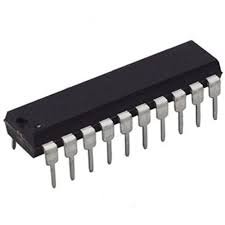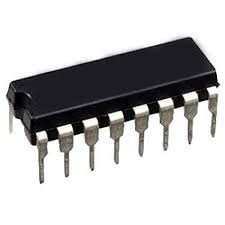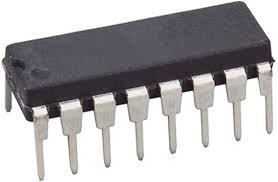IC 74245 – Octal Bus Transceiver (Pack of 2)
2 in stock
The IC 74245 is an octal bidirectional buffer/driver with 3-state outputs, part of the 7400 series TTL logic family. It includes eight buffers/drivers, each with bidirectional data lines and control inputs for enabling or disabling the output. This IC is used for data bus interfacing and signal buffering, allowing for bidirectional data transfer and providing flexibility in digital circuit designs.
₹89.50 ₹188.80 (Incl. GST)
2 in stock
IC 74245 – Octal Bus Transceiver with 3-State Outputs (Pack of 2)
Overview
The IC 74245 is an octal bus transceiver with 3-state outputs, designed to facilitate data transfer between different parts of a digital system. It features eight data lines that can be used to transmit and receive data in either direction, making it suitable for various data handling and interfacing applications. The 74245 operates in a bidirectional mode and provides high-speed data transfer with control signals to manage the direction and enable the transceiver.
Features
- Bidirectional Data Transfer: Allows data to be transferred in both directions, from A to B and vice versa.
- 3-State Outputs: Outputs can be in one of three states: high, low, or high-impedance (tri-state), enabling easy bus-sharing.
- Control Signals: Includes control inputs for direction (DIR) and enable (OE) to manage data flow and output states.
- TTL Compatible: Standard TTL logic levels ensure compatibility with other TTL components.
- High-Speed Operation: Designed for high-speed data transfer in digital systems.
Pin Configuration
The IC 74245 is typically available in a 20-pin Dual In-line Package (DIP) with the following pin configuration:
- Pins 1-8: Data Input/Output lines (A1-A8) for transferring data to or from the bus.
- Pins 19-12: Data Input/Output lines (B1-B8) for receiving or sending data from or to the bus.
- Pin 9: Direction Control (DIR) to select the data direction (A to B or B to A).
- Pin 10: Output Enable (OE) to enable or disable the outputs.
- Pins 11, 20: Ground (GND).
- Pin 18: Positive Supply Voltage (Vcc).
Working Principle
- Data Transfer: The IC 74245 can transfer data between two buses (A and B) based on the direction control signal.
- Data Direction Control (DIR): Determines the direction of data flow:
- DIR = HIGH: Data flows from bus A to bus B.
- DIR = LOW: Data flows from bus B to bus A.
- Data Direction Control (DIR): Determines the direction of data flow:
- 3-State Outputs: The outputs are in a high-impedance state when the output enable (OE) is inactive. This allows multiple devices to share the same data bus without interference.
- OE = LOW: Outputs are active and data can be transmitted.
- OE = HIGH: Outputs are in a high-impedance state, effectively disconnecting them from the bus.
- High-Speed Operation: Designed for fast data transfer rates, making it suitable for high-speed digital applications.
Applications
- Data Bus Systems: Facilitates communication between different parts of a digital system, especially in multi-bus systems.
- Memory Interface: Used to interface with memory modules and other peripheral devices in a computer system.
- Microprocessor Interfacing: Connects microprocessors to other components in a system, allowing for data exchange and control.
- Communication Systems: Enables bidirectional data transfer in communication systems, including networking and data acquisition.
Example Circuit
- Data Bus Interface: In a digital system, the IC 74245 could be used to connect a microprocessor to peripheral devices, allowing data to be sent or received based on the direction control signal. This setup ensures efficient data handling and communication across the system.
Advantages
- Bidirectional Data Transfer: Provides flexibility in data handling by supporting two-way communication.
- 3-State Outputs: Allows for multiple devices to share the same data bus without conflicts.
- Control Signals: Offers precise control over data flow and output states, enhancing system integration.
Conclusion
The IC 74245 is a versatile octal bus transceiver that supports bidirectional data transfer with 3-state outputs. Its ability to handle high-speed data and its flexible control signals make it ideal for various digital and communication applications. Whether you’re designing data bus systems, memory interfaces, or microprocessor connections, the IC 74245 provides reliable and efficient data handling capabilities.
IC 74374 – Octal D-Type Flip-Flop with 3-State Outputs (Pack of 2)





